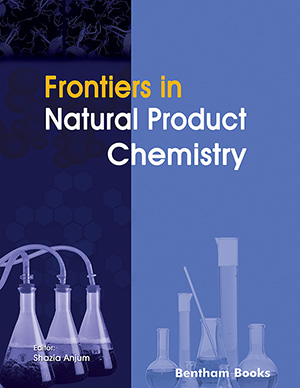Abstract
Background: The target-based approach to drug discovery currently attracts a great deal of interest from medicinal chemists in anticancer drug discovery and development. Histone deacetylase (HDAC) inhibitors represent an extensive class of targeted anti-cancer agents. Among the most explored structure moieties, hydroxybenzamides and hydroxypropenamides have been demonstrated to have potential HDAC inhibitory effects. Several compounds of these structural classes have been approved for clinical uses to treat different types of cancer, such as vorinostat and belinostat.
Aims: This study aims at developing novel HDAC inhibitors bearing conjugated quinazolinone scaffolds with potential cytotoxicity against different cancer cell lines.
Methods: A series of novel N-hydroxyheptanamides incorporating conjugated 6-hydroxy-2 methylquinazolin- 4(3H)-ones (15a-l) was designed, synthesized and evaluated for HDAC inhibitory potency as well as cytotoxicity against three human cancer cell lines, including HepG-2, MCF-7 and SKLu-1. Molecular simulations were finally performed to gain more insight into the structureactivity relationships.
Results: It was found that among novel conjugated quinazolinone-based hydroxamic acids synthesized, compounds 15a, 15c and 15f were the most potent, both in terms of HDAC inhibition and cytotoxicity. Especially, compound 15f displayed up to nearly 4-fold more potent than SAHA (vorinostat) in terms of cytotoxicity against MCF-7 cell line with IC50 value of 1.86 μM, and HDAC inhibition with IC50 value of 6.36 μM. Docking experiments on HDAC2 isozyme showed that these compounds bound to HDAC2 with binding affinities ranging from -10.08 to -14.93 kcal/mol compared to SAHA (-15.84 kcal/mol). It was also found in this research that most of the target compounds seemed to be more cytotoxic toward SKLu-1than MCF-7 and HepG-2.
Conclusion: The resesrch results suggest that some hydroxamic acids could emerge for further evaluation and the results are well served as basics for further design of more potent HDAC inhibitors and antitumor agents.
Keywords: Anticancer agents, histone deacetylase (HDAC) inhibitors, hydroxamic acids, quinazolin-4(3H)-one, conjugated, molecular docking.
[http://dx.doi.org/10.3322/caac.21492] [PMID: 30207593]
[http://dx.doi.org/10.1517/14622416.3.5.603] [PMID: 12223047]
[http://dx.doi.org/10.1038/35106079] [PMID: 11902574]
[http://dx.doi.org/10.1016/j.canlet.2008.08.016] [PMID: 18824292]
[http://dx.doi.org/10.1172/JCI69738] [PMID: 24382387]
[http://dx.doi.org/10.1111/j.1349-7006.2001.tb02153.x] [PMID: 11749695]
[http://dx.doi.org/10.1002/pros.20022] [PMID: 15042618]
[http://dx.doi.org/10.1158/1078-0432.CCR-04-0455] [PMID: 15501975]
[http://dx.doi.org/10.1016/S1535-6108(04)00114-X] [PMID: 15144953]
[http://dx.doi.org/10.1074/jbc.M510023200] [PMID: 16533812]
[PMID: 23459471]
[http://dx.doi.org/10.1016/j.molonc.2007.01.001] [PMID: 19383284]
[http://dx.doi.org/10.2217/fon.12.173] [PMID: 23414475]
[http://dx.doi.org/10.1038/nrd2133] [PMID: 16955068]
[http://dx.doi.org/10.1517/13543784.14.12.1497] [PMID: 16307490]
[http://dx.doi.org/10.1038/nrd772] [PMID: 12120280]
[http://dx.doi.org/10.1016/j.bcp.2007.04.007] [PMID: 17498667]
[http://dx.doi.org/10.1016/j.ejmech.2008.11.005] [PMID: 19084294]
[http://dx.doi.org/10.1016/j.phrs.2010.02.010] [PMID: 20219679]
[http://dx.doi.org/10.1093/annonc/mdn792] [PMID: 19515748]
[http://dx.doi.org/10.1038/icb.2011.100] [PMID: 22124371]
[http://dx.doi.org/10.2174/1568026615666150813145629] [PMID: 26268343]
[http://dx.doi.org/10.1038/nrd3674] [PMID: 22498752]
[http://dx.doi.org/10.1016/j.tetlet.2015.09.147]
[http://dx.doi.org/10.1016/j.bioorg.2016.03.008] [PMID: 27018835]
[http://dx.doi.org/10.1016/j.bmcl.2013.04.054] [PMID: 23683590]
[http://dx.doi.org/10.1016/j.ejmech.2015.02.057] [PMID: 25757092]
[http://dx.doi.org/10.1016/j.bmc.2013.08.051] [PMID: 24055291]
[http://dx.doi.org/10.1021/acs.jmedchem.5b01342] [PMID: 26443078]
[http://dx.doi.org/10.1016/j.bioorg.2017.12.007] [PMID: 29223029]
[http://dx.doi.org/10.1093/jnci/83.11.757] [PMID: 2041050]
[PMID: 3409223]
[http://dx.doi.org/10.1021/np50077a020] [PMID: 1800638]
[PMID: 3335022]
[http://dx.doi.org/10.2174/1568026023394317] [PMID: 11944818]
[http://dx.doi.org/10.1074/jbc.M113.490706] [PMID: 23897821]
[http://dx.doi.org/10.1007/s10822-012-9547-0] [PMID: 22569591]
[http://dx.doi.org/10.1074/mcp.M400159-MCP200] [PMID: 15757999]
[http://dx.doi.org/10.1016/j.jksus.2019.01.011]
[http://dx.doi.org/10.1016/j.bioorg.2017.02.002] [PMID: 28196602]
[http://dx.doi.org/10.1021/ja111104p] [PMID: 21456530]
[PMID: 6066618]
[PMID: 22347520]
[http://dx.doi.org/10.1016/j.sbi.2011.08.004] [PMID: 21872466]































